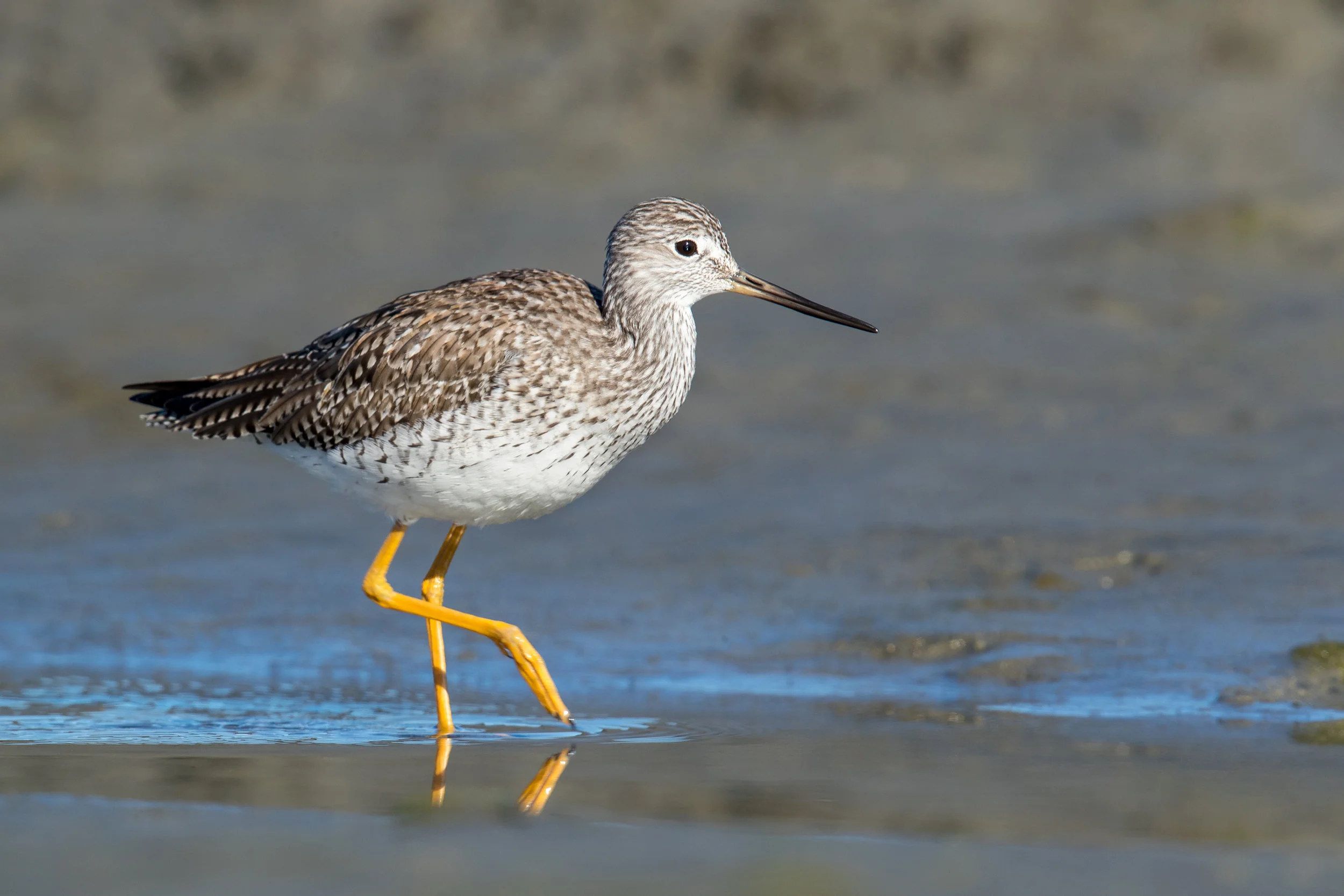The Ruddy Turnstone is a bird of the shorelines and is most often seen in Washington along the outer coast during spring and fall migration.
Sharp-tailed Sandpiper
Most sightings of this Eastern Hemisphere sandpiper in North America are of juveniles in fall migration. One such visitor spent more than two weeks on the mudflats on the Seattle side of the SR 520 bridge from September 22 to October 10, 2022, sparking a newspaper story and interest from birders and nonbirders.
Stilt Sandpiper
Solitary Sandpiper
Snowy Plover
Rock Sandpiper
Dunlin
Dunlins are hardy birds that winter farther north than any other shorebird. This fall and winter they will be along the Washington coast from late October to early May. Major stopover points for them are the tidal flats and coastal estuaries around Willapa Bay and Grays Harbor and the Samish and Skagit Flats where they forage on marine and freshwater invertebrates by probing a few centimeters into the mud or fine-grained sand.
Greater/Lesser Yellowlegs
Baird's Sandpiper
Baird’s Sandpiper is not seen very often in Washington and because of this it poses an identification challenge for many birders. However, its slightly larger size when compared to other peeps; its lack of red or rufous coloration; and its penchant for foraging higher on beaches and in drier areas, all help to separate this peep from the others.
Spotted Sandpiper
Marbled Godwit
The Marbled Godwit (MAGO) is about 18" long with a 29" wingspan and weighs 13 oz. (370g). The genus name Limosa (lie-MOH-sah) is from the Latin limus, meaning "muddy," for its favorite habitat, mudflats. The species name fedoa (FED-oh-ah) is the Latin version of an old and now unknown English word meaning "marbled." - for its mottled plumage.
Western Sandpiper
The Western Sandpiper is part of the genus Calidris from the Greek kalidris which was used by Aristotle for a speckled waterbird. Mauri is from Ernest Mauri (1791-1836) an Italian botanist and a friend of Charles Bonaparte (1803-1857), who named this bird for him. They co-authored a book on Italian fauna. The bird is the western counterpart to the Semipalmated Sandpiper Calidris pusilla and the common name designates this location.






















